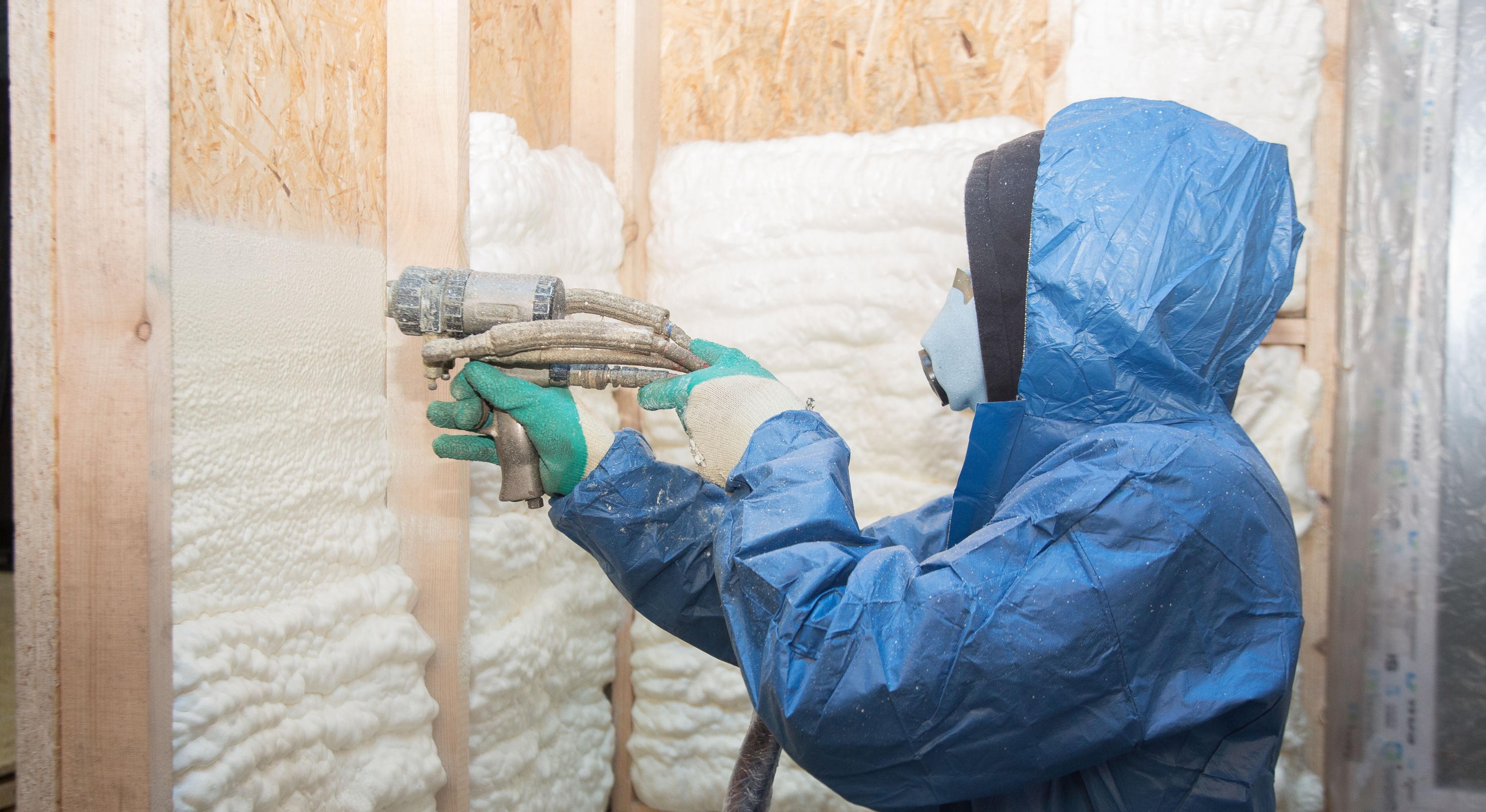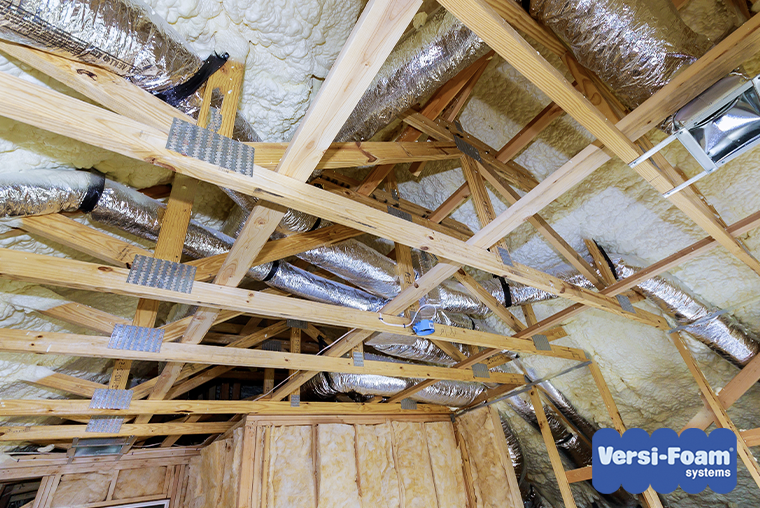Spray Foam: The Ultimate Remedy for Air Sealing and Insulation
Spray foam insulation has become a leading remedy for effective air sealing and thermal insulation, using an unique combination of residential properties that establish it aside from standard approaches. Its ability to expand and fill up spaces makes it specifically reliable in preventing air leakage, which can substantially influence power performance. Recognizing the complete extent of its advantages, installment procedures, and contrasts with various other insulation kinds is crucial for making informed decisions. As we explore these facets, the effects for both brand-new building and constructions and retrofits come to be significantly substantial. What variables should affect your option?
What Is Spray Foam?
Spray foam is a flexible insulation material that combines the principles of air sealing and thermal resistance to enhance power efficiency in buildings. Composed mainly of polyurethane or other similar substances, spray foam is applied as a fluid that increases upon call with surfaces, creating a strong, continuous layer of insulation. This distinct residential property permits it to fill up spaces, cracks, and gaps that conventional insulation products may overlook, giving a remarkable air seal.
There are two major sorts of spray foam: open-cell and closed-cell. Open-cell spray foam is lighter and extra versatile, offering exceptional sound absorption and a lower R-value per inch - Spray Foam. In comparison, closed-cell spray foam is denser, supplying a greater R-value, wetness resistance, and included structural stability to building elements
The application procedure normally involves specific tools, guaranteeing a smooth application that abides by different substratums, including metal, concrete, and wood. This adaptability makes spray foam ideal for both brand-new buildings and retrofitting existing structures. Its ability to produce a closed barrier significantly adds to decreasing energy intake and enhancing interior air quality, thus making it a favored selection amongst property owners and home builders alike.
Advantages of Spray Foam Insulation
Among one of the most significant advantages of spray foam insulation is its outstanding capacity to develop a continual air obstacle, which effectively minimizes energy loss. Unlike conventional insulation materials, spray foam expands to fill fractures and spaces, guaranteeing that air leakage is dramatically lowered. This particular not just improves energy effectiveness but also leads to lower energy costs gradually.
Furthermore, spray foam insulation supplies remarkable thermal resistance, adding to a much more stable indoor setting. Its high R-value per inch enables for efficient insulation in constrained rooms, making it ideal for attics, wall surfaces, and crawl areas. Moreover, the moisture-resistant properties of spray foam aid prevent mold and mildew growth, promoting healthier living conditions.
One more essential advantage of spray foam insulation is its sound-dampening top qualities (Spray Foam). It properly decreases sound transmission in between areas, producing a quieter and much more comfy home setting. The longevity of spray foam also stands out, as it does not droop or resolve with time, keeping its efficiency throughout its lifespan
How Spray Foam Functions
Understanding just how spray foam insulation works is necessary for valuing its effectiveness in air securing and thermal resistance. Spray foam insulation includes two main parts: isocyanate and polyol material. When these components are blended, they undergo a chemical response that triggers the material to increase quickly, creating a thick foam that fills up cracks, gaps, and cavities.
As the foam increases, it sticks to surfaces, forming an impermeable seal that dramatically minimizes air infiltration. article This particular makes spray foam insulation highly efficient at stopping drafts and moisture infiltration, which can lead to energy loss and damage with time. Furthermore, the closed-cell variation of spray foam supplies premium thermal resistance due to its inflexible structure, properly lessening warm transfer.
The distinct residential or commercial properties of spray foam allow it to comply with uneven surfaces, guaranteeing thorough coverage and a seamless barrier. Consequently, spray foam insulation not just boosts energy efficiency however also adds to boosted interior air quality by lowering the accumulation of allergens and toxins. Inevitably, recognizing the auto mechanics behind spray foam emphasizes its duty as an exceptional option for insulation and air sealing in both property and commercial applications.
Installment Refine Summary

Before installation, the room should be properly cleaned and prepped, guaranteeing that surfaces are totally free from debris, wetness, and dirt. This action is vital because contaminants can endanger bond and general performance. As soon as the location is prepared, the application entails blending the 2 components of the spray foam, which increases upon call and fills up gaps efficiently.
Trained experts should perform the installment, using specific tools to guarantee consistent insurance coverage and optimal thickness. Safety preventative measures, consisting of using safety gear and ensuring correct air flow, are vital during this process. After application, the foam generally treatments promptly, developing a solid obstacle that boosts energy effectiveness.
Contrasting Spray Foam to Conventional Insulation
When evaluating insulation alternatives, spray foam insulation stands out in contrast to traditional products such as fiberglass and cellulose. Unlike fiberglass and cellulose, which can permit air infiltration, spray foam expands upon application, filling gaps and gaps to produce a closed seal.
Furthermore, spray foam offers a greater R-value per inch than traditional insulation kinds, offering more effective thermal resistance in a thinner profile. This characteristic is see here particularly useful precede with restricted cavity check over here depth. In addition, spray foam is resistant to moisture and mold growth, which can be a substantial interest in cellulose and fiberglass, especially in damp environments.
However, spray foam insulation normally lugs a higher ahead of time price than its typical equivalents. Homeowners must consider this initial investment versus long-term energy savings and performance benefits. Inevitably, while both insulation types serve their function, spray foam becomes an advanced option for modern insulation needs, particularly in terms of air sealing and thermal effectiveness.

Verdict
In recap, spray foam insulation represents a very effective service for attaining ideal air sealing and thermal resistance. Its distinct residential properties, consisting of moisture resistance and audio dampening, make it ideal for various applications in both new buildings and retrofitting projects (Spray Foam). The preliminary expenses might be higher compared to typical insulation products, the long-term advantages, such as significant energy financial savings and improved indoor air top quality, validate the investment and underscore its worth in modern-day building methods.
Spray foam insulation has actually emerged as a leading option for efficient air securing and thermal insulation, supplying a special combination of properties that establish it apart from standard approaches.Spray foam is a versatile insulation material that incorporates the principles of air securing and thermal resistance to boost energy effectiveness in structures.When examining insulation alternatives, spray foam insulation stands out in contrast to traditional materials such as fiberglass and cellulose. Ultimately, while both insulation types offer their function, spray foam arises as a more advanced remedy for contemporary insulation needs, specifically in terms of air securing and thermal effectiveness.
In recap, spray foam insulation represents a very efficient solution for accomplishing ideal air securing and thermal resistance.
Comments on “Top Applications of Spray Foam for Residential and Commercial Properties”